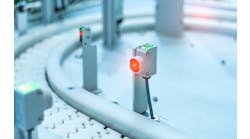Industrial position sensors are important in industrial applications. The determination of an item’s position in industry and manufacturing is a challenge that can have a wide variety of solutions. The most important consideration is that one matches the chosen solution to the application.
The application is the starting point for any evaluation, and this point cannot be over emphasized.
Position sensors play a critical role in industrial applications by providing real-time information about the position of objects or components within a system. Their importance lies in enhancing precision, control and automation across various industrial processes.
All sensors, even those that are ruggedized, require careful handling, installation and care. Many sensors, due to their extreme sensitivity and sophistication can easily be rendered useless, so diligence is required if one wishes to maintain their functionality. For example, an artisan unwittingly welding in the proximity of a sensor can destroy it.
To determine the type of position measurement you need, consider the following things.
Determine whether the application requires linear or angular position sensing. Choose a sensor type that suits the specific needs, such as linear variable differential transformers (LVDTs), rotary encoders, potentiometers or magneto-restrictive sensors.
For optimal accuracy and resolution, consider the required level of accuracy for the application, and evaluate the resolution needed to ensure that the sensor can detect small changes in position.
Environmental conditions are important, too. Assess the operating environment, including temperature, humidity, vibration and exposure to chemicals. And choose a sensor that can withstand and operate reliably in the given conditions.
Also, consider the speed and dynamics of the system to ensure that the sensor can keep up with the rate of change in position. Some applications may require high-speed sensors or those capable of handling rapid changes in position.
Durability and reliability are key to ensure long-lasting operation. Evaluate the robustness and durability of the sensor, especially in harsh industrial environments. Consider the expected lifespan and reliability of the sensor for the given application.
Integration with control systems is a critical consideration. Ensure that the chosen sensor can easily integrate with the existing control systems. Check compatibility with communication protocols such as analog signals, digital signals, such as RS-485 or CANbus, or fieldbus systems.
Also, be aware of power requirements. Consider the power consumption of the sensor and ensure that it aligns with the available power sources in the industrial setting. Some applications may require low-power sensors to optimize energy efficiency.
Don’t forget to consider cost. Evaluate the overall cost of the sensor, including purchase, installation and maintenance. And calculate the cost-benefit ratio to choose a sensor that provides the required performance within budget constraints.
Maintenance requirements are equally important. Assess the maintenance requirements of the sensor and consider the ease of calibration or replacement, if necessary. Choose a sensor with a reputation for long-term reliability and minimal maintenance needs.
Finally, safety standards and compliance must be addressed. Ensure that the selected sensor complies with relevant safety standards and regulations in the industry. Check if the sensor has appropriate certifications for the intended application.
What is the process for choosing a position sensor? Choosing the right position sensor for an industrial application requires careful consideration of various factors to ensure it meets the specific requirements of the system.
First, define application requirements. Clearly define the application requirements, including the desired precision, accuracy and range of measurement. And consider the environmental conditions, such as temperature, humidity and the presence of dust or other contaminants.
Identify position measurement type. Determine the type of position measurement needed—linear or angular. And consider whether absolute or relative position information is required.
Be sure to understand motion characteristics. Analyze the motion characteristics of the object being measured, including speed, acceleration and frequency of movement. And consider whether the position sensor needs to handle dynamic or static measurements.
Consider environmental conditions, too. Evaluate the environmental conditions in which the sensor will operate. Different sensors have varying levels of resistance to factors such as temperature, vibration and exposure to moisture or chemicals.
Mounting constraints should be evaluated, also. Consider physical constraints, including available space and the mounting options for the sensor. Determine if the sensor needs to be integrated into existing machinery or if it can be externally mounted.
Then determine output type. Choose the output type that best suits the control system, whether it's an analog signal, digital signal or a communication protocol such as CANbus or Modbus. Evaluate the compatibility with existing control systems.
Select the right technology. Explore different sensor technologies, such as potentiometric, inductive, capacitive, optical or magneto-restrictive. Consider the advantages and limitations of each technology in relation to the specific application requirements.
And consider power requirements. Evaluate the power requirements of the position sensor, and ensure they align with the available power sources in the industrial setting. Determine if the sensor needs to operate on low power or if power consumption is not a critical factor.
Evaluate cost by considering the budget constraints for the project and evaluating the cost of different position sensor options. Factor in the total cost of ownership (TCO), including installation, maintenance and potential replacement costs.
Check compatibility and standards by ensuring that the selected position sensor is compatible with the overall system architecture and interfaces.





